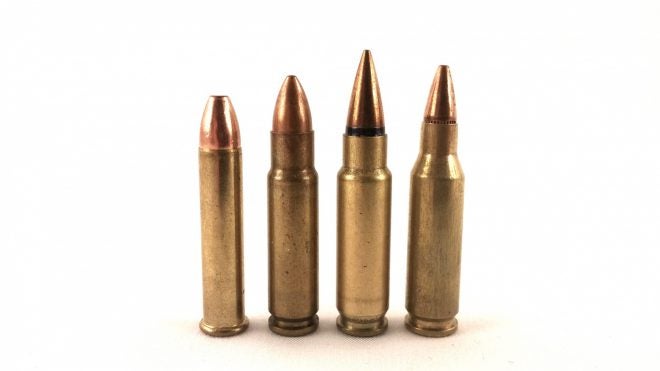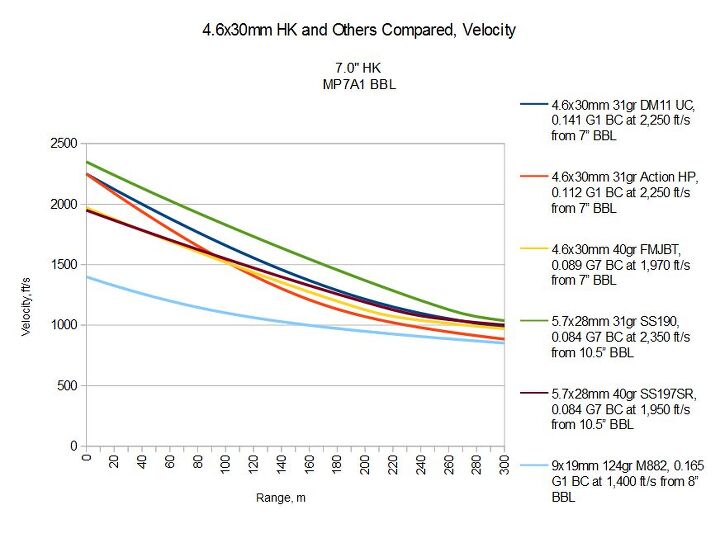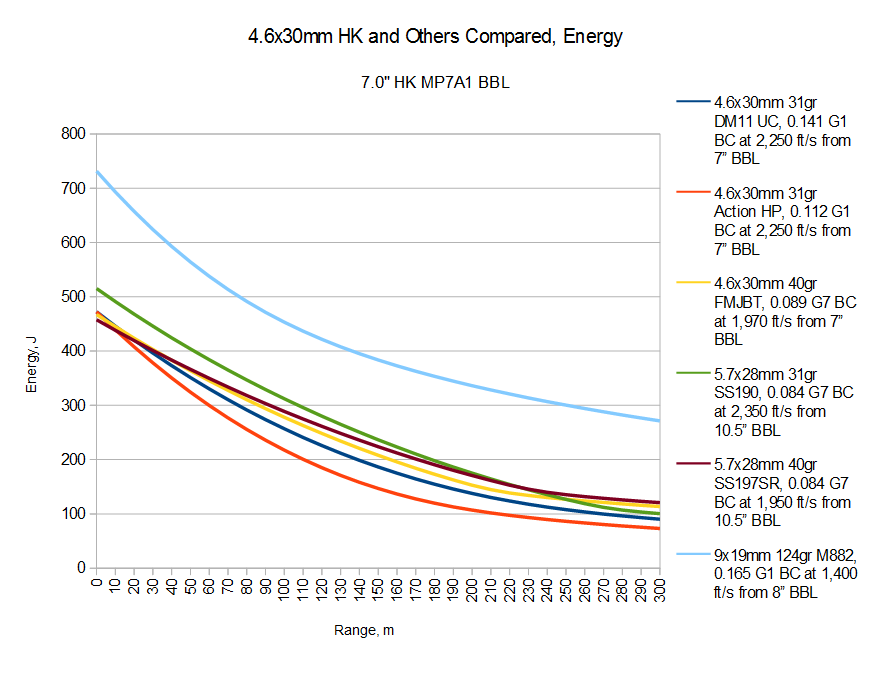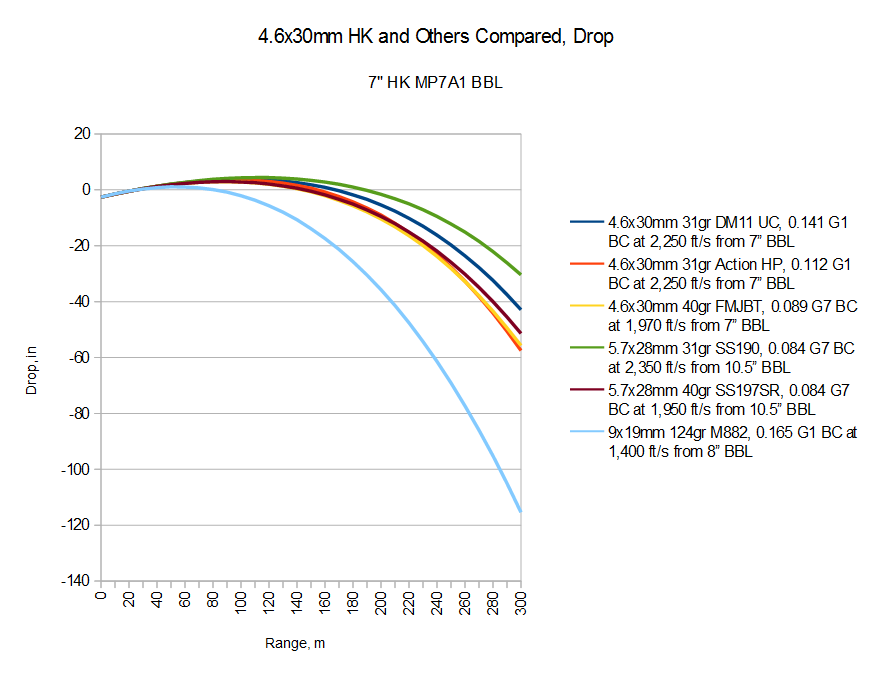If the 5.7x28mm FN is the first successful modern PDW round, then the 4.6x30mm HK is the second, and its biggest rival. German firm Heckler and developed the microcaliber 4.6mm in the 1990s as a response to a NATO solicitation for a Personal Defense Weapon, to which they submitted their new HK PDW (later MP7) chambered for the new round.
The 4.6x30mm HK is an 0.18″ caliber round firing bullets of much the same weight (but inferior ballistic shape) as the 5.7x28mm, but at slightly lower velocities due to the MP7’s shorter barrel.
It is compared to the 5.7x28mm FN and the 9x19mm NATO in the charts below:
Overall, the 4.6x30mm suffers the same problems that the 5.7x28mm does, those being poor energy retention and mediocre wounding capability. However, the 4.6mm does improve on the retained specific energy (energy divided by frontal area, an important consideration for armor penetration) vs. the 5.7x28mm. Therefore, I would expect the 4.6mm to be the superior armor defeater, with the 5.7mm having less poor terminal effects.
Due to its very similar overall characteristics to the 5.7x28mm FN, the 4.6x30mm will likewise have very similar recoil characteristics, and therefore I will omit that section for this post. For all intents and purposes, they are identical in terms of recoil.
Likewise, in terms of weight the two calibers are also virtually identical for a given projectile weight, at about 6.5 grams per shot.
Between the two rounds, I agree with the conclusions of NATO testers that the 5.7mm is overall the better cartridge. The choice of a 4.6mm bore diameter on HK’s part is in my opinion a “bridge too far” for the small PDW cartridge concept, and is the major limitation of the round with respect to manufacturing, internal and terminal ballistics, and other characteristics. The perforation advantages of the 4.6mm caliber don’t seem to be very significant, and the same effect could also be achieved with the 5.7mm via an improved core or a sabot loading, anyway. Most significantly, though, the 4.6x30mm HK is – due to its small bore – essentially incompatible with modern service pistol designs.
 Your Privacy Choices
Your Privacy Choices



